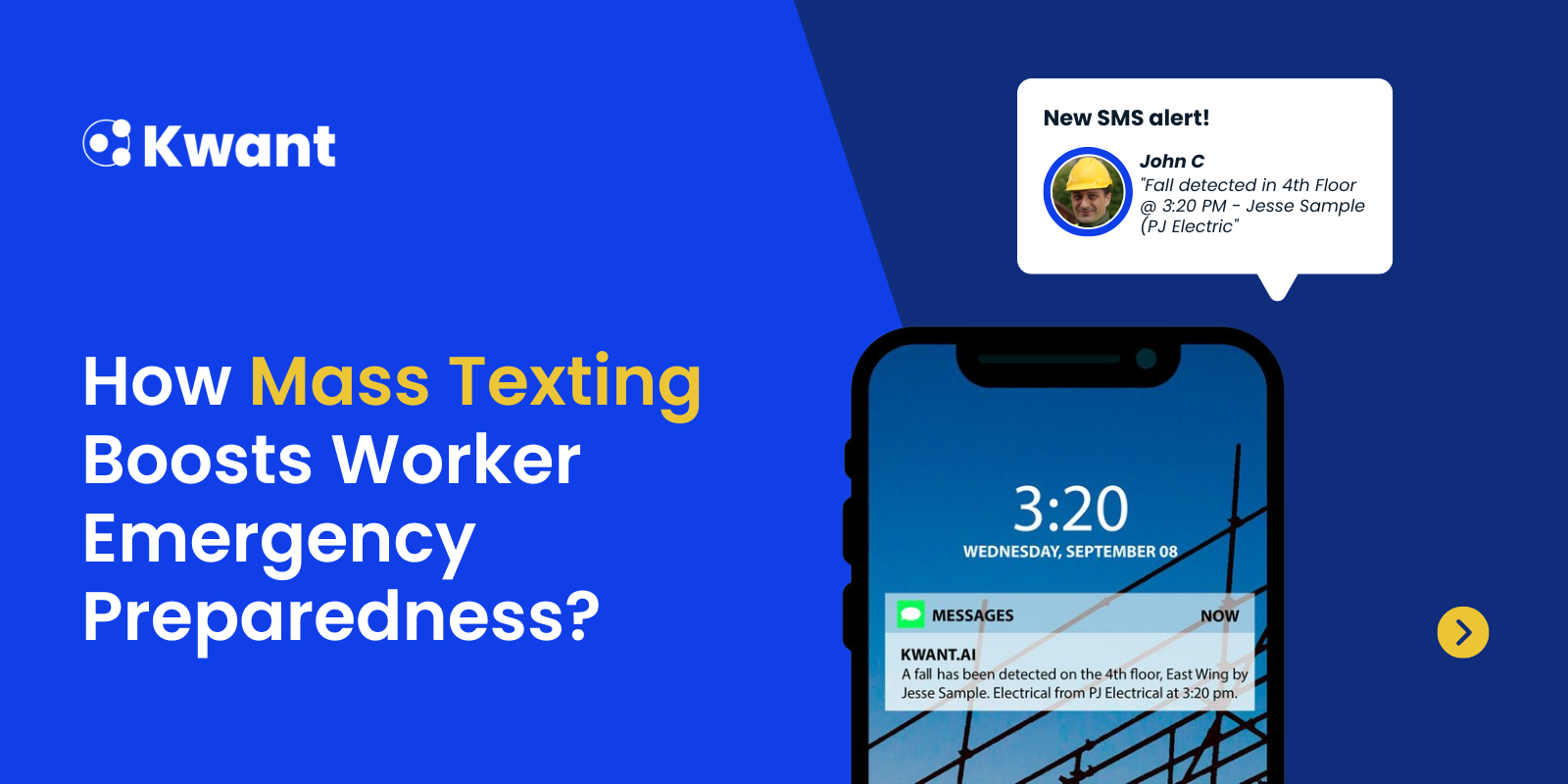“Having a bird’s-eye-view of your site sounds cool- but how exactly does it help the bottom line? In this series, we’ll provide you with a detailed overview of how location awareness works to keep workers safer, schedules tighter, and costs lower.”
.jpg)
Production doesn’t happen without people. Construction, manufacturing, and other industrial segments depend heavily on labor for productivity. Consequently, labor makes up the largest percentage of the project costs.
Labor costs are one of the major criteria that can impact the long-term viability of a project, so it’s vital to have an understanding of exactly how your workforce is moving and whether the right tasks are completed.
But tracking this data while maintaining the anonymity of the workers can be a major hurdle.
Fortunately, the advancement in AI and IoT-related tools have allowed us to capture the vital statistics necessary to understand your labor movement, capture their actual productivity, and take actionable measures on how we can improve the work environment to increase efficiency. This is where location awareness steps in.
In addition to productivity increases, location awareness is critical in preventing your workforce from entering hazardous or restricted areas.
In case of a leak, spill, or wide variety of unpredictable incidents, it becomes vital for the project supervisors to prevent their workforce from entering into a space that can lead to potential danger.
The pairing of location awareness and prompt alerts can help mitigate those dangers at an early stage before a disaster occurs.
Kwant's proprietary technology and hardware platform allow us to address these issues to provide a safer and more productive work environment.
Our partners have been successfully able to utilize the Kwant platform to make long-term decisions impacting their businesses, and create additional opportunities for them to save. (Check out one of the case studies here).
Let’s take a look at how the concept of location awareness allows your team to monitor safety and productivity simultaneously, maintaining the required levels of anonymity, and without the need to run cables, internet, or power connections.
Part 1: Zoning at a Glance
In Part One, we’ll cover the concept of “zoning”. Zoning lays the groundwork for the more detailed cost and scheduling analyses to come (we’ll explain those in parts 2 & 3).
Sites are dynamic. Tradesmen are constantly on the move given the nature of the work, and these complex environments can be hard to keep track of.
Location awareness provides a bird’s-eye-view of exactly how many people from each trade are on site at any given point, and whether they’re doing the tasks required to maintain the schedule. But how do we get this information automatically? The answer lies in zoning.
Each worker is assigned a badge or hardhat beacon with a battery life of over 24 months, and Kwant installs low-profile sensors around the job site that require no additional power or WiFi.
These Kwant sensors communicate with those badges and can then position them on your proposed architectural drawings or factory floor plans effectively creating a “heat map” of where labor is allocated to give the safety and project management teams deeper insights of their project.
Workers can be grouped based on their company, crew, or trade and assigned different color/symbols to help them distinguish on a plan, as show here:

But the real magic comes into play when you create “zones” on the floor plan. With one click, you can mark a zone as “productive,” meaning if a trade is spending time there, it’s likely on schedule. Similarly, you can assign areas onsite as “transit” or “unproductive”. Lastly, each zone can be marked “unsafe”, regardless of productivity status. Kwant is there to assist every step of the way.

Zoning out these plans is valuable, because you and your field teams have access to never-before-seen information.
- How much time a trade is spending in the designated work area?
- Is the task in the schedule the task actually being worked on?
- Is more time spent in tool zones or in transit (i.e., transporting the materials)?
- How much time is being spent in unproductive zones?
- Are uncertified individuals in dangerous areas?

Each zone allows you to see the time a company/crew/trade or person has spent in those marked zones. You can aggregate the data for a specific time frame and gain a better understanding of work shifts and how each crew behaves differently during the day vs.
during the night shift. Suddenly, you can see whether the hours you think are being spent on a task are accurate, and hidden problems (like spending time on a productive, but less-than-critical task) are easily detected.
This data can help in improving the material placement, assigning work shifts, mobilizing different crews, and organizing parallel activities at your project site.
These zones can also be marked as Unsafe or Restricted zones:
- Give only tradesmen with the necessary permissions and certifications to be allowed free access. Any person who has not been cleared by the project supervisor and still enters that area will trigger an SOS alert notifying the team for immediate action.
- Zones can be assigned dates if a hazardous activity has been planned in your project schedule. As soon as the end date goes by, the area will automatically be marked safe.
While all of this information is being revealed, we also want to respect the privacy of individuals and trades on site. Kwant gives you the option to hide names, show only trades, or allow only certain individuals to see certain teams.
This is game-changing information. You don’t have to uproot your existing practices, but your field leaders have crucial information they simply didn’t have access to before.
And yet, there’s so much more than zoning can do. Stay tuned for parts 2 & 3, and if you can’t wait, check out the ROI our partners have gotten back so far.
.svg)

.png)










%20(1).svg)














